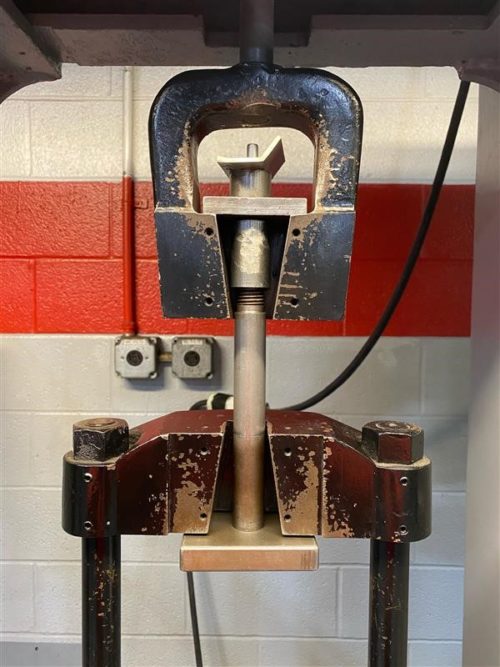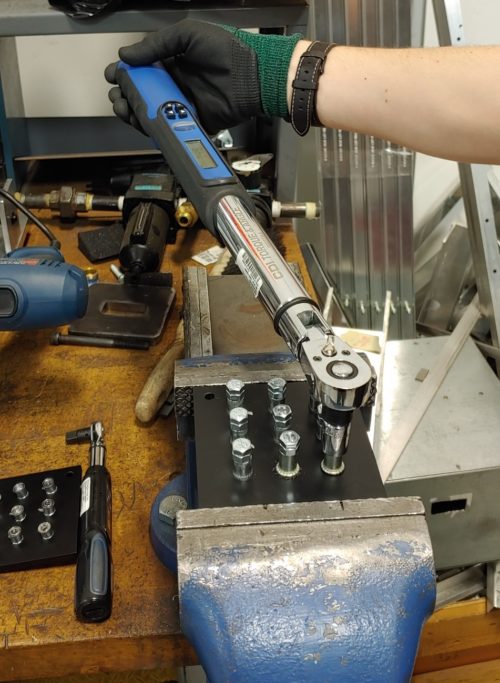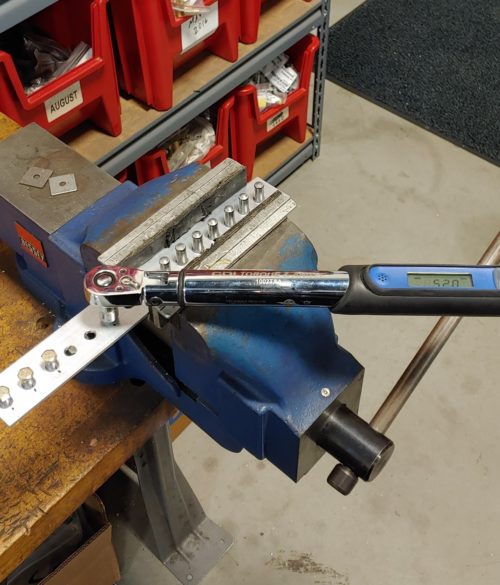There are dozens of different styles of rivet nuts manufacturers can choose from when deciding on a fastening solution to help improve their assembly. While the material, coating, size, body style are all important, how the rivet nut performs under strenuous conditions is often times what matters the most.
Performance testing of rivet nuts is extremely important. It helps validate how the rivet nut will perform under an array of conditions to give manufactures and assemblers assurance that under that same kind of stress in their own design application, their joint will be able to hold up to any expected loading condition.
Here are some of the ways Sherex conducts rivet nut performance testing.
Pull-Out Testing
Pull-out failure occurs when threads are pulled from the rivet nut (ultimate thread strength), or when the base material is distorted and the rivet nut (either partially or entirely) pulls through the base material. Sometimes this happens with the hole size is too big for the rivet nut or when the force applied to the joint is higher than anticipated, causing the rivet nut to pull right through the hole.

Using a tensile machine to pull the rivet nut through the hole
This is tested by assembling our joint into a tensile machine. Tensile load on the joint is increased until the integrity of the crimp fails, whether it be due to material deformation or due to severing of the crimping bubble from the flange of the rivet nut.
Spin-Out Testing
Spin-out is the amount of torque required to make a rivet nut spin in the hole it was installed in. This happens when the bolt cross-threads into the rivet nut, causing it to spin. It can also occur when excessive corrosion causes the bolt to bind in the nut.

What it will take for the rivet nut to spin in the hole?
This is tested by assembling a test bolt into the shank end of the rivet nut. Torque is increased until the integrity of the crimp fails and the rivet nut starts to spin in the material. Failure torque recorded is the maximum torque reached before the rivet nut starts to spin.
Torque-Out Testing
This is the torque required to strip threads out of the rivet nut. This method of testing sandwiches the head of the rivet nut between the non-rotational mating part and parent or base panel.
Spin-out is not a factor because tightening the bolt on the non-rotating part holds the rivet nut in place and prevents it from spinning.

Torque the bolt on the flange side of the rivet nut until the bolt, rivet nut, or base material is compromised
This is tested by assembling a test bolt into the flange side of the rivet nut, with the flange supported entirely by a hardened test plate. Torque is increased until the integrity of the joint fails, whether it be due to the bolt snapping inside the rivet nut or due to the threads of the rivet nut stripping. Failure torque recorded is the maximum torque reached before thread failure occurs.
Assembly Torque / Clamp Load
Sherex gives recommendations for the assembly torque to achieve recommended clamp load in our catalog to give the recommended torque for assembling a rivet nut joint using any Sherex-manufactured rivet nut. Testing is for this is important, because different joint configurations will produce different clamp load levels.
Assembly torque is calculated as a ratio of proof load, which designates thread strength per SAE J995 for unified (UNC/UNF) internal thread sizes and ISO 898-2 for metric sizes. This is our recommendation for Sherex-manufactured parts meant to meet Grade 5/Class 8 thread strength specifications. All torques designated represent recommendations for assembly from the flange side with the flange entirely supported.
All failure loads, torques, and assembly recommendations are heavily application-dependent, and any recommendations found in the catalog or results from different applications should only be used as a reference.
For any questions on testing or any parts that require a higher grade or property class designation, please contact us!





